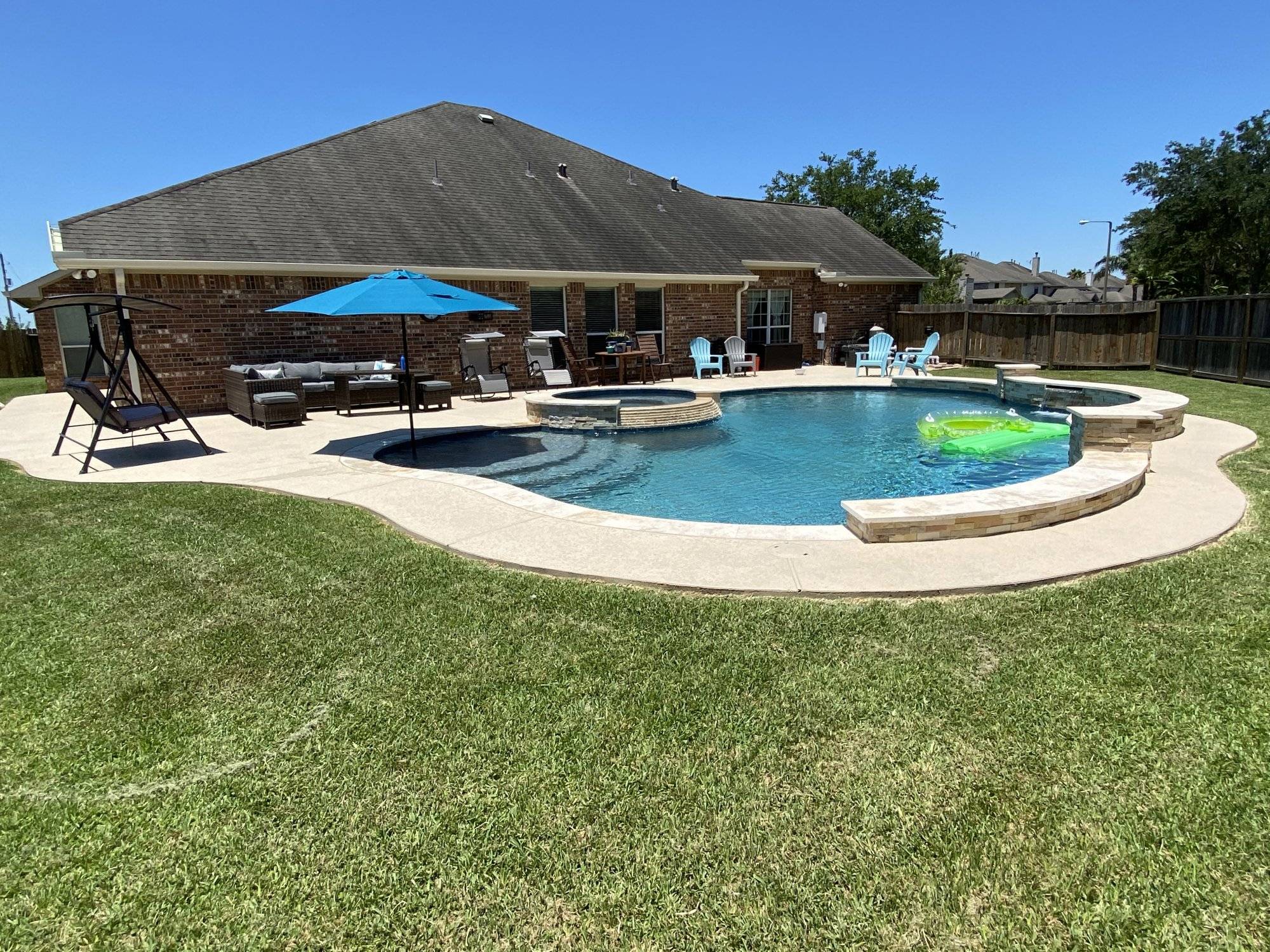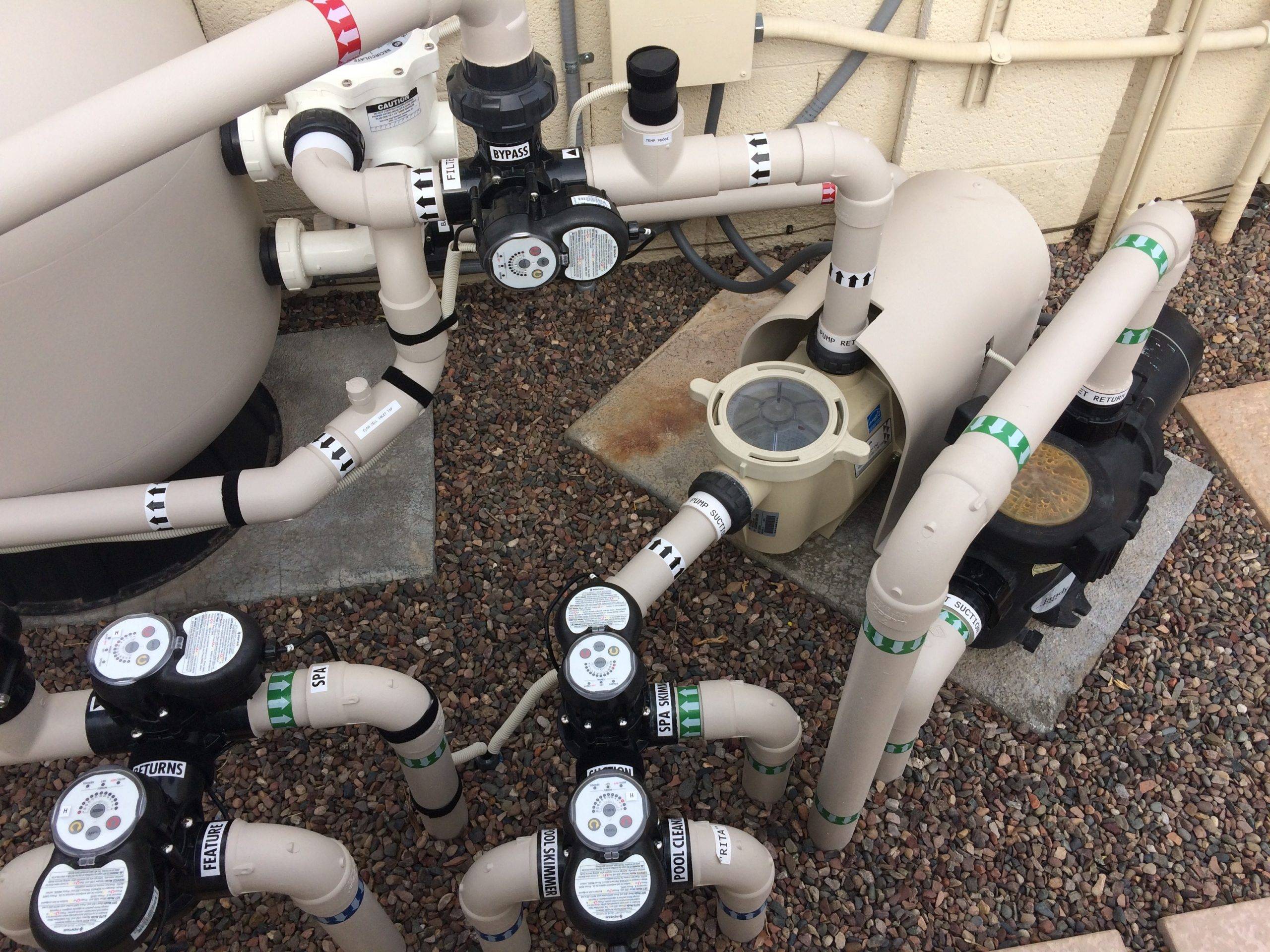Hi all, first post and looking for some construction / equipment advice on a new residential pool:
PB recommending 2" Black Poly (std. in all their pool builds), but based on the limited information below and reviewing the various Pump/Pipe Sizing documents I believe upgrading to 2.5" Pipe will be worth the additional install costs. ($1500)
PB recommending 2" Black Poly (std. in all their pool builds), but based on the limited information below and reviewing the various Pump/Pipe Sizing documents I believe upgrading to 2.5" Pipe will be worth the additional install costs. ($1500)
- 32000 gal free form pool (custom sized and 8000 gal larger than their largest offering)
- Hayward C4030 Cartridge filter & Hayward 900 OmniVS
- Hayward OmniLogic Automation
- 3 Hayward UCL LED 12v lights & transformer
- 2 Hayward SP1085 AutoSkim with 2" connections
- 32000 / 8 hours (turnover) / 60 = 67 GPM (minimum flow at turnover)
- Desired flow rate would be 78 GPM
- total pipe, including 45's, T's and 3-way Valves = 486 ft



